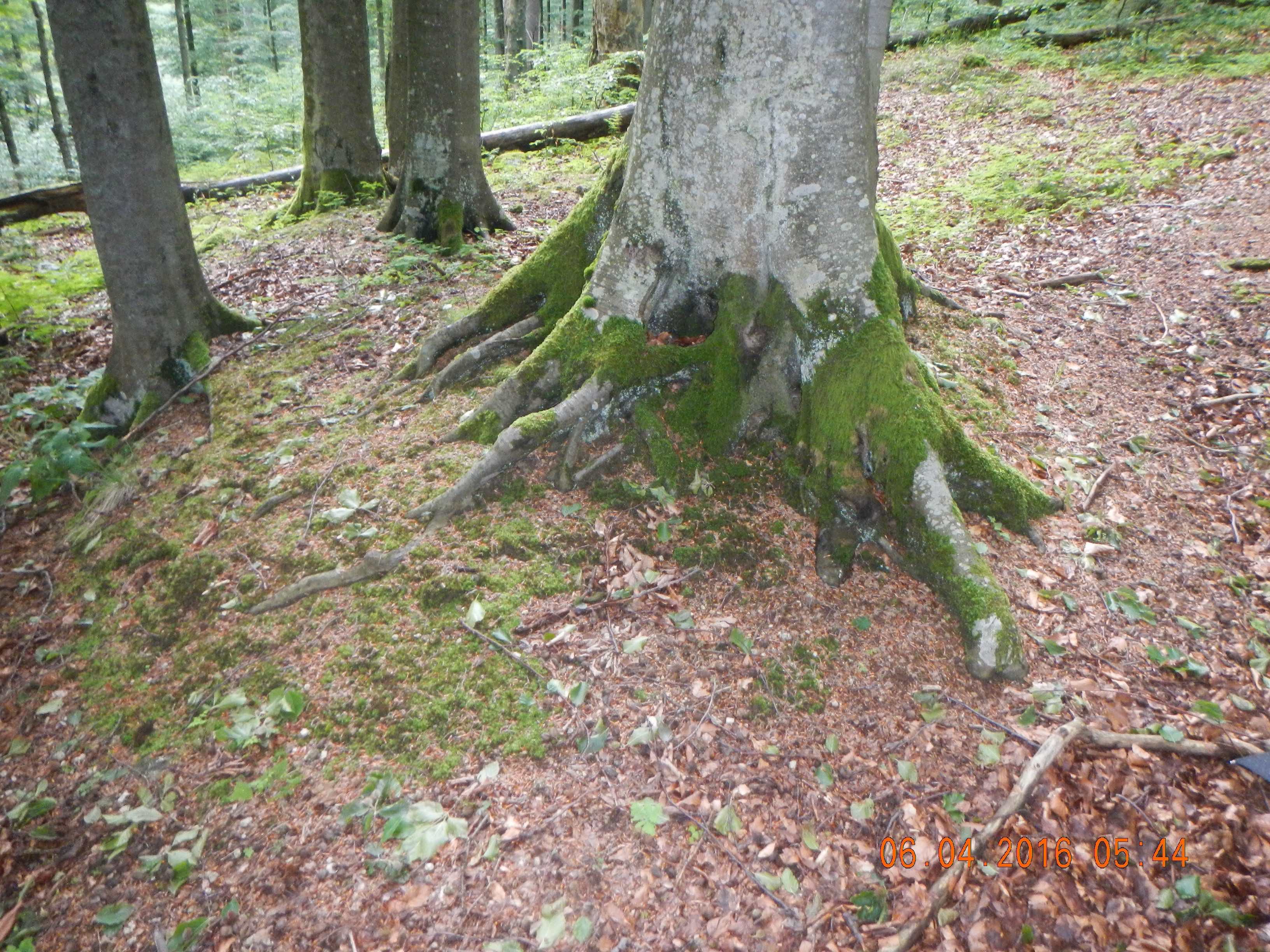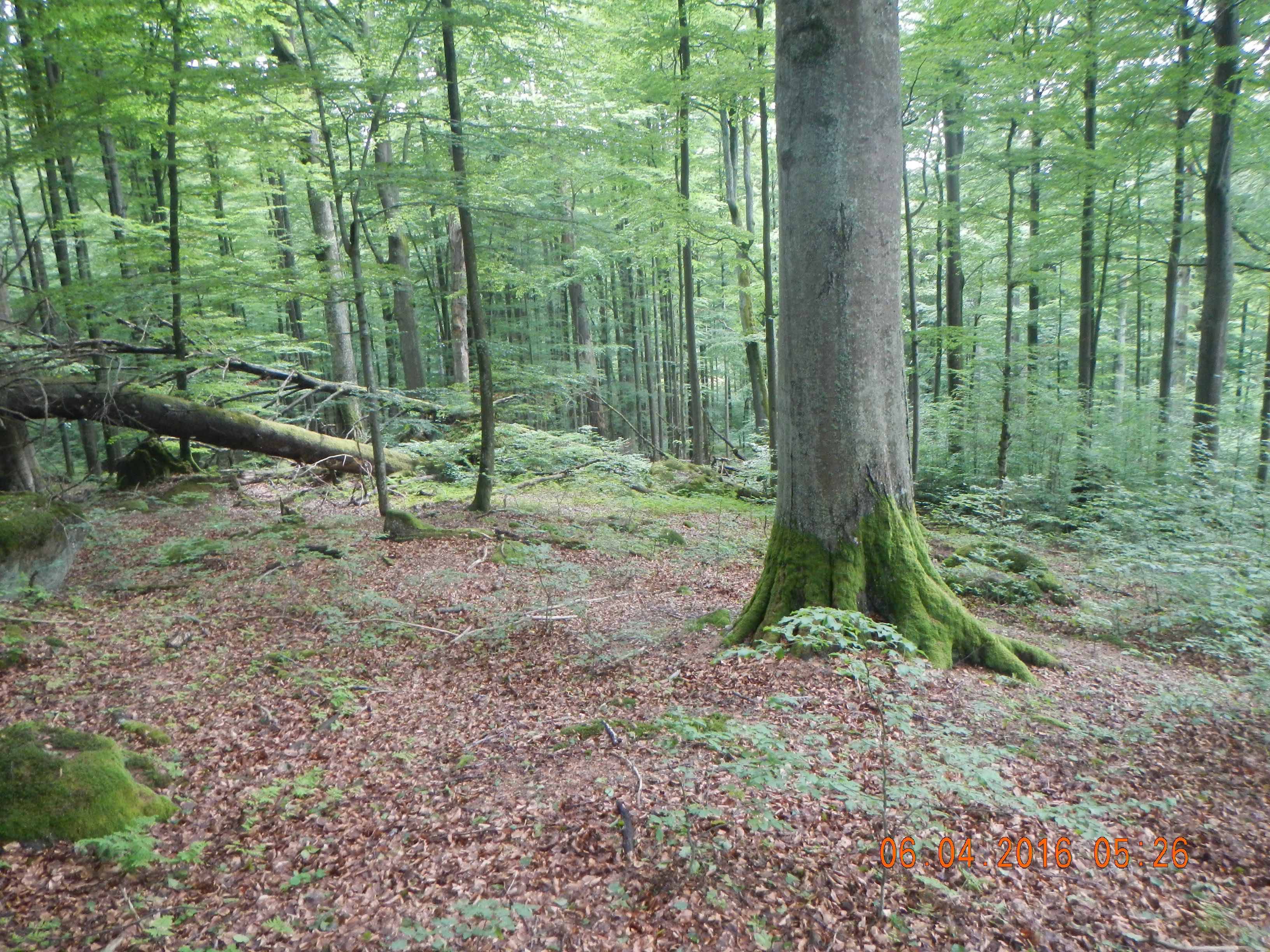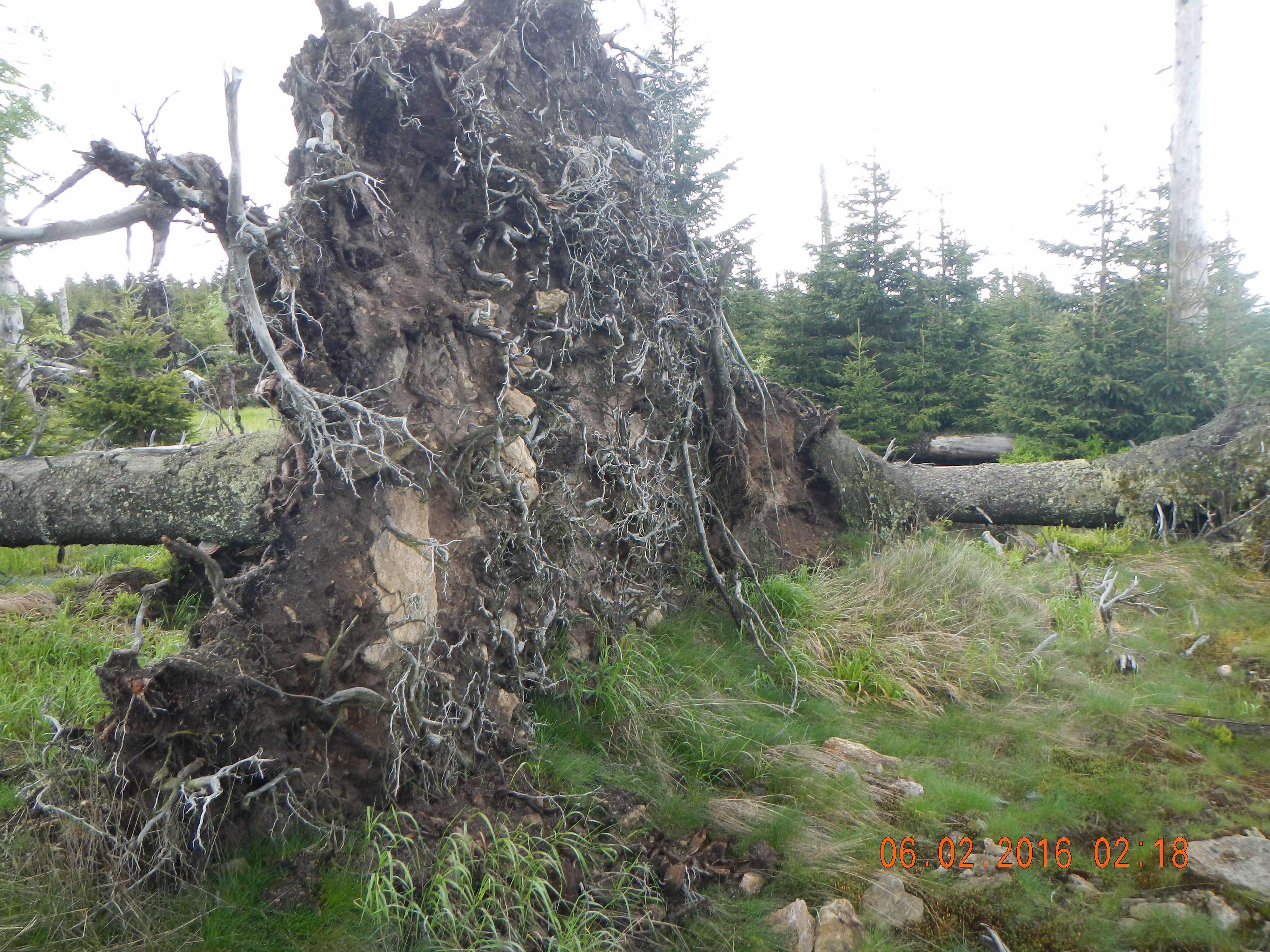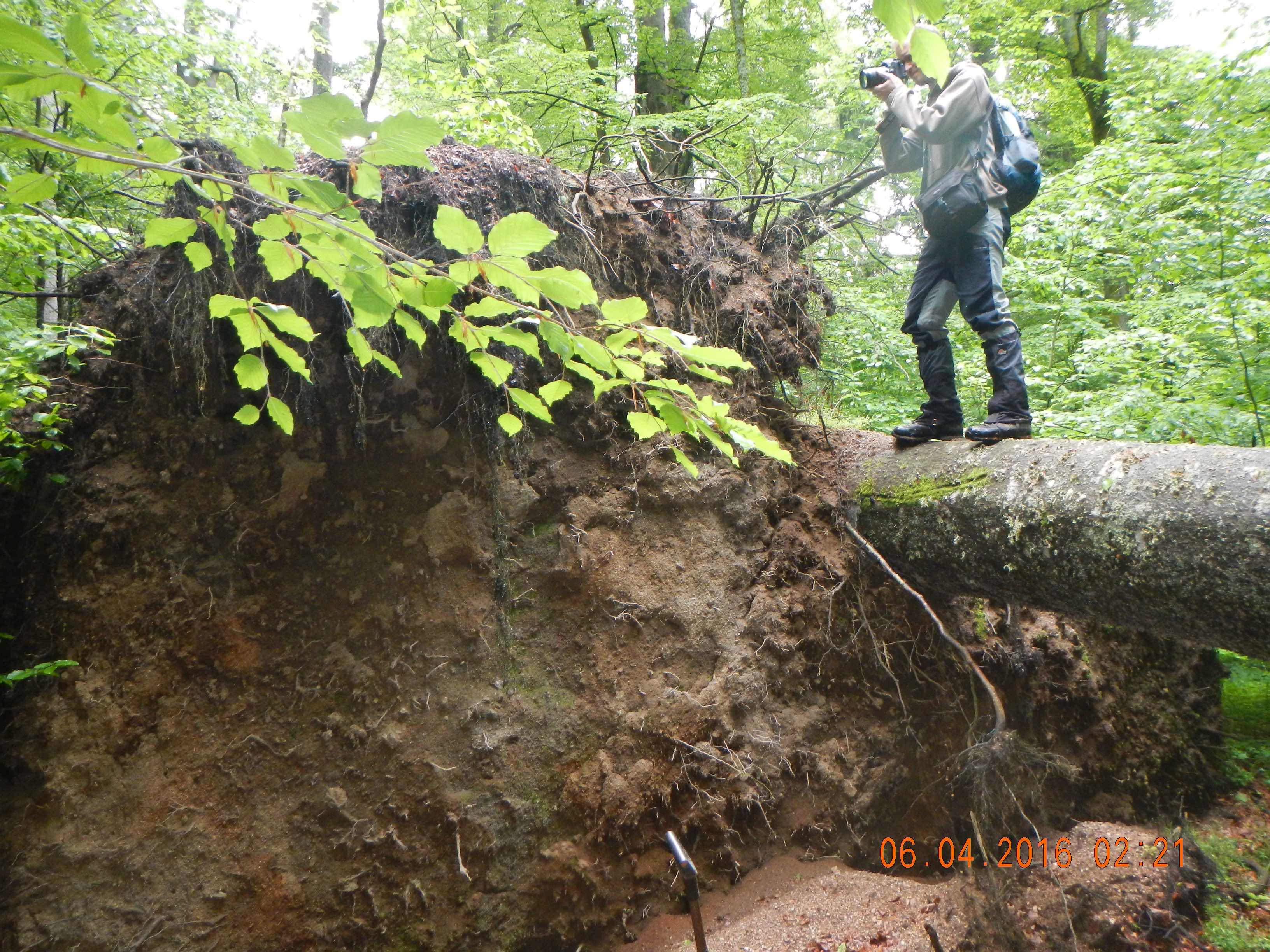Tree uprooting in forests has all sorts of ecological, pedological, and geomorphological impacts. Those are not just related to disturbance--because of the time it takes uprooted trees to decompose, and the distinctive pit-mound topography created, those impacts may last decades to centuries (and sometimes even longer). One discussion I've often had with colleagues who study this sort of thing has to do with ecosystem engineering and niche construction. Obviously uprooting is a major biogeomorphic process. Obviously it has important impacts on habitat. But do these impacts favor either the engineer species (i.e., the tipped over tree) or some species? Or are they more or less neutral, in the sense of modifying habitat but not necessarily in such a way as to systematically favor any given species?

Uprooted Norway spruce.
Some of my friends and colleagues in the Blue Cats Research Group in the Czech Republic have shown in old-growth forests of central Europe that the mounds eventually resulting from uprooting are favorable sites for new trees to grow, due to favorable soil conditions, and perhaps also freedom from immediately adjacent competition for light, water, etc. (Šebkova et al., 2012). But sometimes the new tree is the same species as the old one that uprooted, sometimes not (often one cannot tell, but they have awesome historical tree census records at their sites). The new mound-trees were often European beech, suggesting that the ecosystem engineering effects might be positive or negative, depending on whether the uprooted tree was beech or not. However, we could not dismiss the notion that, since there is a thriving population of beech around, that it could simply be seed source effects--that is, with plenty of beech nuts around in a mature late-successional forest, maybe odds are that any favorable opportunity for new tree growth favors Fagus sylvatica.

Mature Fagus sylvatica on old tree throw mound.
Now comes another study out of central Europe, lead-authored by another friend and colleague (Pawlik et al., 2017) that pretty much nails it down, at least for their sites in Poland's Sudetes Mountains. The short version of the story is that the forest was originally a mature mixed forest, including beech, spruce, and other species. That was replaced, as is often the case in that part of the world, by a Norway spruce-dominated forest in the 19th and early 20th century (spruce is favored by the timber industry). Spruce has a much shallower, spreading root system than beech, and is therefore more prone to uprooting (though Fagus certainly does get uprooted). A windstorm in 1933 caused widespread uprooting in the forest among the Picea abies, with the usual pit and mound microtopography eventually resulting. The mounds (rather than the pits) are overwhelmingly the favorite sites for tree regeneration since, and the new trees are mainly beech. Because beech were few and scattered, this cannot simply be a seed-source phenomenon.

Mature Fagus sylvatica on old tree throw mound.
Thus, at least there, uprooting of Picea constitutes passive ecosystem engineering (i.e., does not necessarily favor the engineer species) and negative niche construction (favoring organisms other than the engineer). In addition to the effects on uprooting, differences in root architecture also influence interaction with bedrock and thus weathering and moisture flow and other aspects of soil and regolith development (see review by Pawlik et al., 2016). Further, beech and spruce litter differs greatly in composition, leading to substantial differences in soil chemistry and microbiology.


Uprooted Norway Spruce, above, and root mound of uprooted beech. Note the difference in thickness.
Thus, the biogeomorphic effects of uprooting not influence species composition, forest succession, and local soil properties, but the entire (bio)geomorphic regime of a hillslope or forest stand (see, e.g., Phillips et al., 2017).
--------------------------------------------------------------
Note: photos are from my collection, taken in forests in the Czech Republic similar to those discussed above, but are not related to those specific studies and not originally intended to illustrate the phenomena involved.
---------------------------------------------------------------
References:
Pawlik, L., Musielek, L., Migon, P., Wronska-Walach, D., Duszynski, F., Kasprzak, M., 2017. Deciphering the history of forest disturbance and its effects on landforms and soils--lessons from a pit-and-mound locality at Rogowa Kopa, Sudetes, SW Poland. Bulletin of Geography, Physical Geography Series 12, 59-81.
Pawlik, L., Phillips, J.D., Samonil, P., 2016. Roots, rock, and regolith: biomechanical and biochemical weathering by trees and its impact on hillslopes - A critical literature review. Earth-Science Reviews 159: 142-159.
Phillips, J.D., Šamonil, P., Pawlik, L., Trochta, J., Daněk, P., 2017. Domination of hillslope denudation by tree uprooting in an old-growth forest. Geomorphology 276: 27-36.
Šebkova, B., Šamonil, P., Valterra, M., Adam, D., Janik, D. 2012. Interaction between tree species populations and windthrow dynamics in natural beech-dominated forest, Czech Republic. Forest Ecology and Management 280, 9–19.
